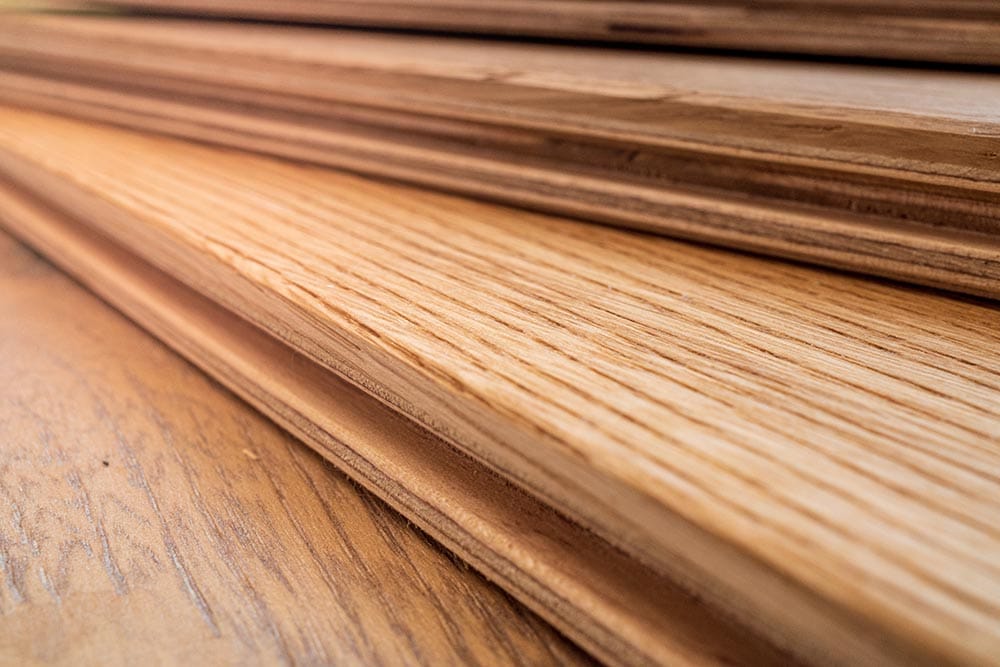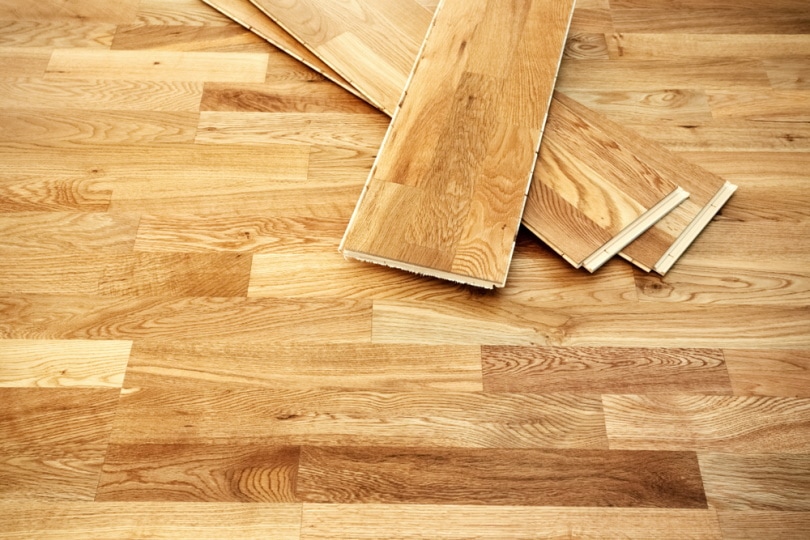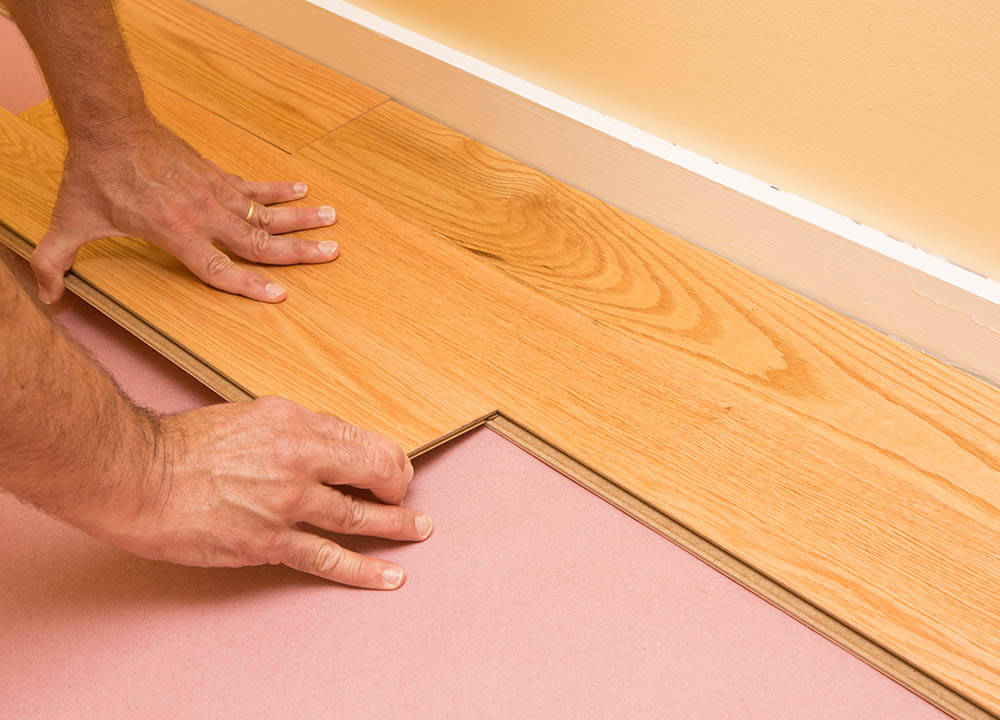Can Engineered Hardwoods Be Refinished? Facts & FAQ
-
Pete Ortiz
- Last updated:

Engineered hardwoods are a great modern option for flooring. Engineered hardwoods look great and hold up to wear over time. However, engineered hardwoods are not immune to getting scuffed and faded. Old engineered hardwoods can lose their luster, just like traditional hardwood floors.
If you have engineered hardwoods in your home that aren’t looking their best, it can leave you wondering whether you can safely refinish your floors. Can engineered hardwoods be refinished? The answer is it depends. There are a lot of factors that go into determining whether you can or should refinish engineered hardwood floors.
Cutting Through The Noise
There are a lot of opinions on this topic. Many people adamantly believe that engineered hardwoods should never be refinished, while others believe that they can safely be refinished every time. There are anecdotal accounts that can support both sides. It can make this issue very confusing. There are no clear answers to this question. Every home is different, and each floor’s history and status are different. There are dependable ways to gauge whether your engineered hardwoods can safely be refinished, but it takes a lot of reliable information to do so.

Know Your Wear Layer
The number one determining factor when it comes to refinishing engineered hardwoods is the thickness of the wear layer. A wear layer is a clear protective coating applied to engineered flooring at the time of manufacturing. The wear layer seals the floors, provides a protective coating, and gives the appearance some shine. When you refinish engineered flooring, you will be sanding down the topmost wear layer. The thicker your wear layer the better chance you have at successfully refinishing the floors.
The best way to determine what the thickness of your wear layer is, is to look it up straight from the manufacturer. Unfortunately, this means that you must know the age, style, and manufacturer of your floors. This can be extremely challenging if you are the second owner of the home or the floors. Without official specifications from the manufacturer, it can be very difficult to determine the remaining wear layer.
The best thickness for a wear layer in regard to refinishing is 3mm. Each subsequent refinishing effort takes off about 1mm of the wear layer. Most experts agree that engineered hardwoods can be refinished 1 to 3 times if the floors start with a 3mm wear layer.
Engineered Hardwoods That Can Be Refinished
Engineered hardwood floors that can generally be refinished include the following. First, any engineered hardwoods with a remaining wear layer of 3mm or thicker can safely be refinished at least once. Second, any engineered hardwoods that have guidance from the manufacturer in regard to refinishing can safely be refinished if you read, understand, and follow the manufacturers’ guidelines. Lastly, engineered hardwoods that have been refinished once before and still have 2mm or 3mm of wear layer can often be refinished again.

Engineered Hardwoods That Cannot Be Refinished
There are quite a few types of engineered hardwoods that cannot be refinished. Any engineered hardwoods that have been refinished before should be approached cautiously before refinishing them again. You should never attempt to refinish any engineered hardwoods that you do not know the thickness of the wear layer.
Any engineered hardwoods that have guidelines from the manufacturer warning against refinishing should not be refinished. Engineered hardwoods that are damaged or have deep cuts, scuffs, or scrapes should not be refinished. Older engineered flooring that you do not know the age of or the previous history of the floors should not be refinished.
Attempting to refinish engineered hardwood floors that do not have a sufficient wear layer can lead to permanent damage. If you sand through the wear layer and begin sanding away the actual wood, it will leave the floors in bad shape. Damaging your floors can lead to a hefty bill to replace the planks completely. Many engineered hardwood floors are installed with very thin thicknesses and removing any amount of material from a very thin plank can cause irreversible damage.
How to Decide Whether or Not to Refinish Your Engineered Hardwood Floors
If you know your floor’s history and its manufacturer and can confidently determine the upper wear layer of your flooring, you should be able to refinish the floors at least once. If you do not know all three of these things, the proposition becomes much riskier. Floors that have been previously refinished or have an inadequate wear layer can become severely damaged if they are refinished.
If you do not know the important information about your floors, you can attempt to contact a professional. A contractor who specializes in flooring and refinishing jobs should theoretically be able to examine your floors and offer an opinion. If you do decide to get professional help, be sure to gauge how confident they are in your floor’s integrity and try to get a guarantee against damage in case something goes wrong.
In Conclusion
Some engineered hardwood floors can easily and safely be refinished. They will look great after you are done and will refresh your home. However, not all engineered hardwoods can be refinished in this manner. Be very careful before diving into a project. Knowing the critical information beforehand will help you determine whether your floors will take a refinishing job well. Not knowing the correct information or guessing can lead to serious damage to your floors, and no one wants that.
Featured Image Credit: Peeradontax, Shutterstock
Contents


